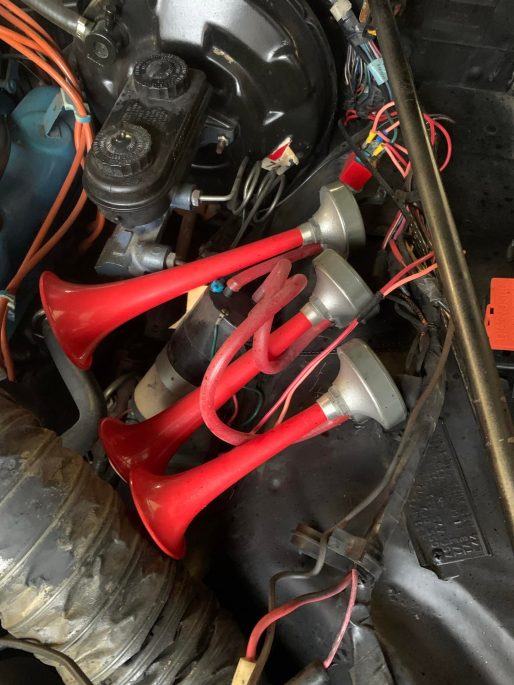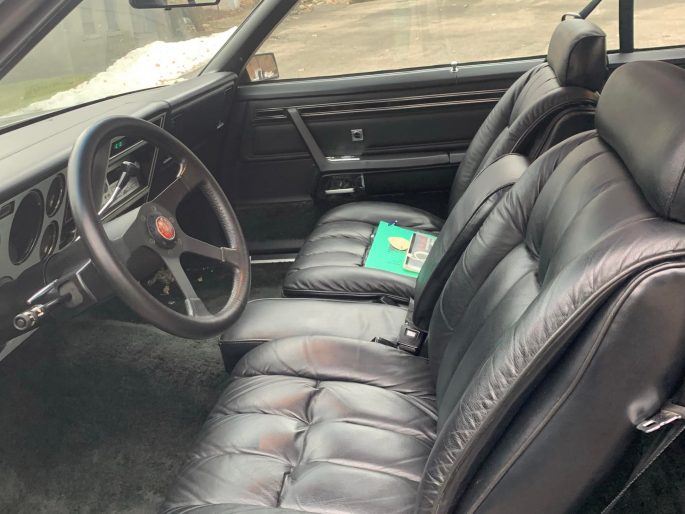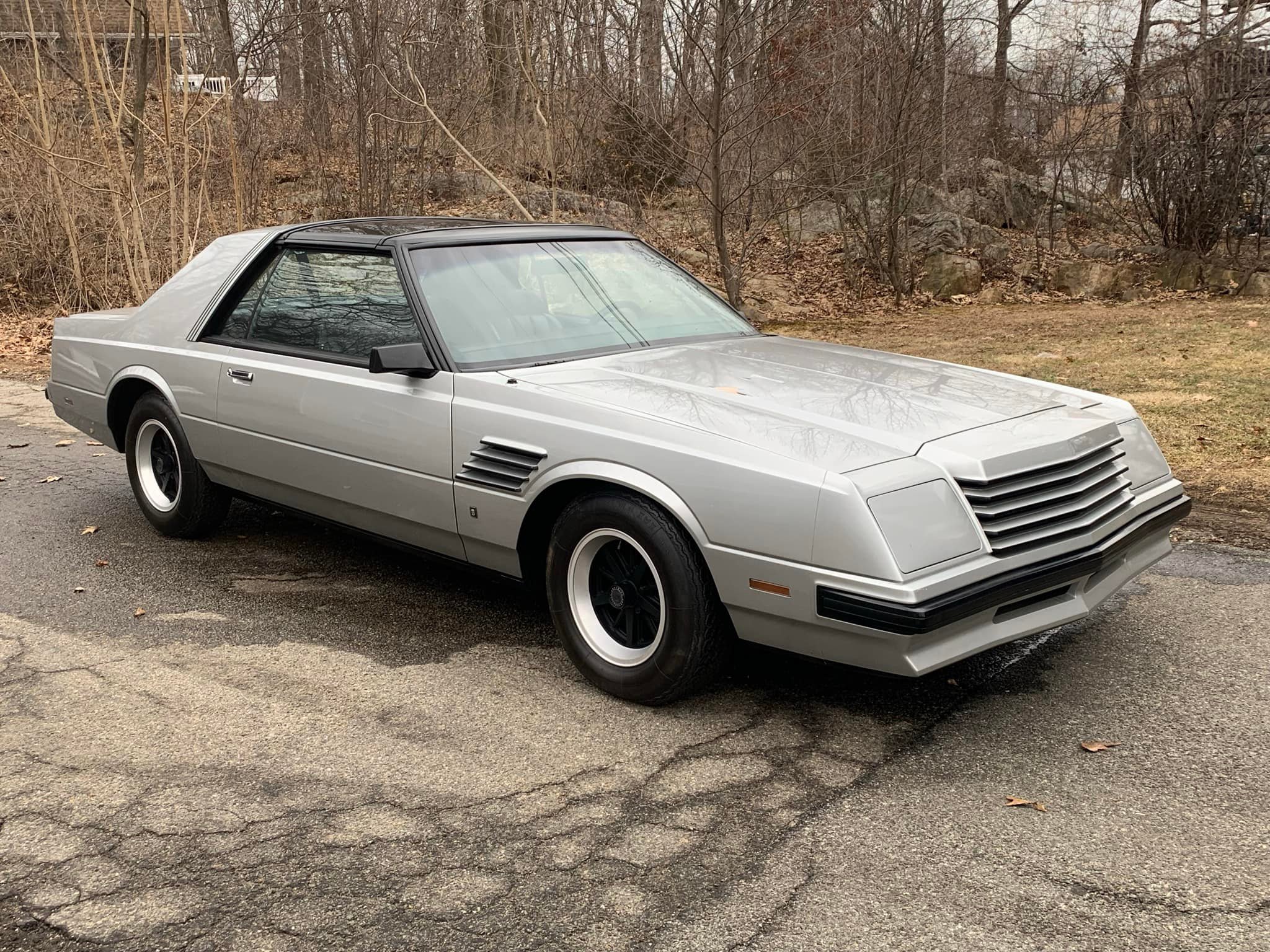Readers, every single time I’ve come to you asking for information, you have always responded with knowledge, insight, and facts that even Google can’t figure out. Every single time, you have come through. So I’m here today with a subject that I should know everything about…and I do know quite a bit about it…but there are gaps missing in the story and questions that need some answers.
The story starts earlier this week with a call from a friend of mine, Kyle Karp. Kyle is the guy who bought the “Project Raven” Imperial from me. Which means that he is one of the other 17 or so people who is as deep into the Chrysler FJM platforms as I am. Which means that he qualifies for free mental health treatment through a government program, but I digress. Without going deep into that story, let’s just say that the Imperial did to him what it did to me. Which is why I was surprised when he reached out at all…I figured that the next time I would hear from him would be an in-person affair and that he would have two large dudes named Nicky and Vinny next to him and that they all just “wanted to chat”. Instead, Kyle had questions regarding a vehicle that he and David Cohen, a friend and car collector, purchased together. I’ve known about this car for years, but I’ve never seen it in person. Kyle and David bought a legitimate Chrysler show concept, the 1980 Magnum Mirada show car.

In today’s phrasing, this would be a “preview concept” or something along those lines…the show car that’s 90-95% exact for what is going to hit the showrooms. Normally a company would take a pre-production proof build or an early-production car, doll it up a bit, and send it on the show circuit. Except that this is Chrysler in 1980…Lee Iacocca has already gone hat-in-hand to the government for loan guarantees to keep the lights on, RWD is all but a dirty word in Auburn Hills, and Richard Petty had already jumped ship to racing GM products after he was none-too-pleased with his 1978 Dodge Magnum racecar. The Mirada, along with the second-gen Cordoba, were more-or-less orphan models before the hit the showroom floor. Why bother tarting these up when the Omnis and Horizons were bringing in buyers and the K-car was just about ready to turn the corner?
For years I’ve speculated that the Mirada/Cordoba/Imperial were supposed to be the production Turbine cars. Chrysler was very close to pulling that trigger, and part of the loan guarantees involved shutting that program down…but not before three Dodge Aspens and one Dodge Mirada were sent to the Department of Energy for testing and a 1978 Chrysler LeBaron coupe was modified into the LeBaron Turbine show car. We entertained the possibility that the Magnum Mirada was the turbine-powered Mirada, but a Hagerty article that interviewed Stellantis historian Brandt Rosenbusch explained that the turbine car was a 1981 model. Oh well.
There is plenty of mystery surrounding this fairly unknown, long-hidden concept. Here’s what we do know:
- * The car’s build appears to have been farmed out to Creative Industries in Detroit, if the keytag found inside is accurate.
- * The car has an XS-coded VIN number. For the Mopar knowledgable, this might make you cringe a bit…”XS” VINs code to three models: Charger, 1978-1979 Magnum, and Mirada. Which means that yes, by Chrysler’s coding, the Dodge Mirada is the successor to the 1969 Dodge Charger.
- * The 2-bbl 318 V8 is present. But what isn’t present is the electronic headache known as the Electronic Lean Burn System. In it’s place is a Chrysler electronic ignition system, and per Kyle, everything is in place and nothing is modified. No loose or cut wires or connectors, no extra holes in the firewall, nothing.
- * The black interior is a fully custom setup. The seats are either Imperial or high-end Cordoba leather units, and the door panels have been modified on the upper half, replacing the horribly designed plastic top with a covered piece. Oh, and black interior was not an option…this gut started life blue.
- * The car does NOT have hide-away headlights, like I believed it did. Those are simply metal plates covering the standard Mirada headlight/turn signal.
- * This car has Ferrari-esque horns on it. I know, Kyle demonstrated them over the phone. My ears are still ringing
- * The wheels are Cordoba “five-on-five” mags painted black.
- * The little badge underneath the fender vent shows a crest emblem, which was common for Chrysler products in the 1970s. That crest was used on both Aspen and Diplomat.
- * The Magnum Mirada was shown at the 1980 Chicago Auto Show for sure.



Here’s what know we don’t know:
- * Any other shows where the Magnum Mirada was shown besides the 1980 Chicago Auto Show. The car would’ve been a good showpiece for Chrysler through early 1983, as the J-body line of cars was axed by mid-year.
- * Whether this is an actual production Mirada, a pre-production Mirada, or potentially a highly-modified Aspen/Diplomat with a Mirada VIN plate. While the Aspen (F-body) and Diplomat (M-body) were available in two-door form, the coupe wheelbase was 108.7 inches, where the J-body coupes rode on the 112.7″ wheelbase that underpinned the sedans and wagons in the other models. Add to that some strange construction towards the rear of the car and we don’t know what to think.
- * The story on how this car survived. According to Kyle, there are about seven different variations of the story, but most can be condensed down to two main routes: the car was sold or auctioned off as part of a Chrysler “excess property” deal with no title or that lthe car was rescued from a junkyard after it was brought in to have a hot date with the crusher.
- * The VIN at first glance codes to a 1980 Dodge Mirada…except there’s a hitch. This car uses the 1968-1980 13-digit VIN code. 1970 and 1980 would both be represented by a “0” in the year. The 17-digit code was 1981-newer but uses letters, and I have seen decoders that uses “A”, this car’s year code, to represent 1980 (and 2010, since the letter system is was in use until 2009.)



That’s what we have. The Magnum Mirada is in good hands with Kyle and David, and they would like to have as much information as possible when they start showing the car. They are excited to be holding onto a piece of Chrysler history and I’m happy that this oddball Dodge still exists and still moves under its own power. Do you know anything about this car that we already don’t? Do you have pictures of it at any show back in the day that you would like to share? Maybe you worked at Chrysler back then and can help fill in some gaps with our current information. We hope to learn more about this machine!




















I attended the auction at Creative Industries outside parking lot when this car and others were sold, I bid it up to $4,000 and dropped out, it sold for slightly more. Bill of sale only, no title. Oddly enough, three other electric show cars minus the drivetrains we’re sold as well. They were based on the Chrysler L body platform, Omni / Horizon two door platforms. I had no interest in those very cobbled up cars, but someone bought them! The winning bidder of the Mirada owned Rattle Run Salvage in St Clair Michigan, he hung on to it for many years. I was a Chrysler Engineering Mechanic at that time, building prototype cars in Road Test Garage build up area. I loved these Mirada’s and 81/83 Imperial as well.
The only “Mirada Concept Car” I’ve ever seen is one that my friend Craig near York, PA has owned for forever. It’s technically been for sale for decades but the price has always been so high it wasn’t worth talking about to me.
Did these guys buy it from him?? IF so, I would’ve thought that he knew everything there ever was to know about it.
All 1980 Chrysler 318s (at least with federal emissions) did not have Lean Burn even though 1979 and 1981 did. So it’s no surprise this one doesn’t have it.
Aso, 1980 was the last year for the short VIN. 0 was not reused to denote the year. A was used to denote 1980 and eliminate confusion with 1970.
The seats are correct for a Mirada. Mirada shared the same leather seats as available on Cordoba. But as noted, the factory did not offer black seats.
Magnum Mirada started life as a Nightwatch Blue Blue Leather interior Synthetec Engineering was Contracted by Chrysler in 1979 to build for 1980 Auto Show circuit New York Detroit Chicago & Los Angeles. at a cost of $80,000 Creative Industries was Contracted to Transport Car on Show Circuit and when done it sat in their lot with 10 miles on it. The stories that it was taken out the back door is false .